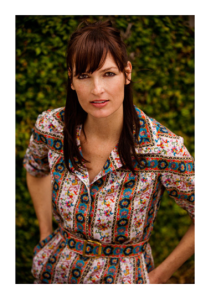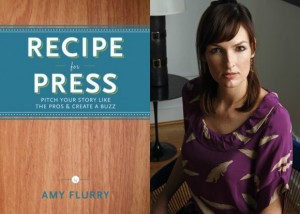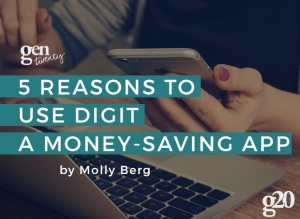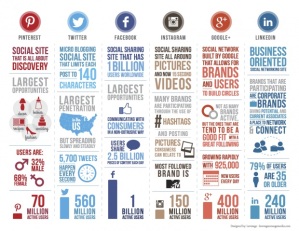 For Amy Flurry, a local public relations and communications professional in Athens, her career has always been about storytelling.
For Amy Flurry, a local public relations and communications professional in Athens, her career has always been about storytelling.
A journalism graduate of the University of Georgia, Flurry wrote for regional and national magazines for almost 20 years before turning to PR.
Now working in communications, Flurry wears three different hats: Founder of Recipe for Press, Creative Director of Parlore and Co-founder of the Paper-Cut-Project. All three roles allow Flurry to tell stories and communicate using visuals.
Flurry said she made her transition from journalism to communications when the print industry was changing in the late 2000s. The jump was natural since Flurry had always done both editing and communications in her career.
“In 2009 and 2010, when the industry was turning upside down and everything was going digital, no one knew where that was going,” she said. “It seemed like the right time to change. I could not see my future in print anymore.”
It was during that time that she decided to author a book. She also opened a consultancy to share the knowledge she had gleaned in her 20 years as an editor.
“It was a big moment and a market decision to leave behind something I was comfortable with,” she said. “I was a features writer and interviewing top designers like Marc Jacobs and Vera Wang. At some point I thought, I’ve been so busy telling other stories. I need to figure out what my own story is.”

Flurry began telling her own story by writing Recipe for Press, a guide to DIY PR for entrepreneurs. Flurry also opened a consultancy that evaluates brand strategies and helps prepare small businesses to pitch and to get press coverage, on their own. In addition she gives workshops and speaks on DIY PR across the country.
Flurry says she is able to help with these pitches since she was on the other end of the pitch email for years.
“I’ve been on the other side and in a position where I could share wildly with big audiences,” she said. “In my experience, I’ve found that a good publicist is an editor’s best friend.”
Flurry says that she enjoys the communications industry for the connection that it provides.
“I really like public relations and when people get clear communication, it can connect you with like-minded people and those curious about what you do,” she said. “When you communicate effectively, you open up your world a good bit. More than you can do on your own.”
Flurry genuinely enjoys her work and keeps a busy schedule to prove it. In addition to Recipe for Press, Flurry heads the creative team of Parlore, an interior design app, and runs the Paper-Cut-Project, which transforms sheets of paper into dramatic silhouettes.
Along with having three different titles, she described many of the day-to-day tasks she does regularly.
“I write physical letters on a regular basis, I email and I Instagram. I am also probably part of more meetings than I’d like to be,” she said. “Then there’s Slack. It’s an app that tries to get you off of email. It maintains the stream of conversation in one place. For every project I do, I use Slack and that’s been great.”
Slack is just one of the many examples of how Flurry has embraced technology and social media and used them to better her communications practices.
“There’s so much more information out there,” she shared. “Now you can target pitches so specifically. You can look at where people write for and what they post on social media. You can get a sense of who they are as people. Technology helps in the DIY process so the publicist does homework before pitching.”
In terms of the strategies she uses, Flurry says she has her own “common sense” theory when it comes to pitching. When budgets were decreasing in newsrooms, she thought of what editors might need given the cuts of staff and money.
“My theory is that there were fewer people with more content to produce and less means to produce it,” she said. “If an editor’s in a bind, who am I going to go to? Who will pick up the phone? My approach was more giving people, from my perspective as a former editor, what I’m looking for.”
Flurry says some of her proudest moments in public relations have been when business owners take her tips and apply them to getting publicity. Her book Recipe for Press offers both tips and interviews with business owners about how people can create effective and targeted pitches.
“I really love when people who come to my workshops briefly get their own PR and see it work,” she said. “I love when what I taught makes sense and they see it work and share it. That’s pretty delightful.”
In the future, Flurry sees PR as moving away from hired agencies to more in-house communications. Business owners are becoming more savvy to the fact that they need to do active communications and PR internally.
“I see PR moving in house. Rather than having 20 clients you can focus on one,” she said. “A lot of people love that agency experience and the amounts of money going towards campaigns. What you learn in agency PR can be brought to corporate/in house PR.”
Using the tips from her Recipe for Press business, business owners can communicate smaller stories and pitch to local editors. One of the tools Flurry offers is the pitch wheel, which is an interactive calendar-based wheel that helps publicists determine when to pitch to regional and national publications.
Along with DIY publicity, Flurry recommends that small to mid sized businesses hire a communications director for their team.
“It’s not their sales position who does this on the side. It’s a position that you take seriously that will grow the business,” she said. “Many big companies have strong in-house communications. Now I see that filtering down to mid to small companies. Doing this does take time and it takes relationship building.”
For current students of PR, Flurry recommends pursuing this kind of in-house PR, as well as being gracious and hardworking in the field.
“I feel like working in communications is about relationships and follow through,” she said. “Also about being lovely, easy to work with and being prepared.”
She also stresses that communications is really about storytelling, and being able to share that story consistently over time.
Flurry gave the example of Sara Blakely, the founder of Spanx, who skillfully shares the story the hosiery company based in Atlanta.
Blakely is able is be herself, but at the same time share her story and share the right parts. In television and print interviews, Blakely consistently shares what Spanx is and what they hope to accomplish.
“This is part of what grows a company. You all share the same story,” Flurry said. “If you control your story and stay on message, your communications and your company will grow.”
She says that communications is a great industry to go into because of the current opportunities for students.
“Communication is power. I love when I see great people representing great companies,” she said. “PR contributes clarity and connection to society.”
To learn more about Flurry and her work, visit amyflurry.com, recipeforpress.com, paper-cut-project.com or http://www.parlore.com.
Images courtesy of recipeforpress.com and ohmyhandmade.com.






